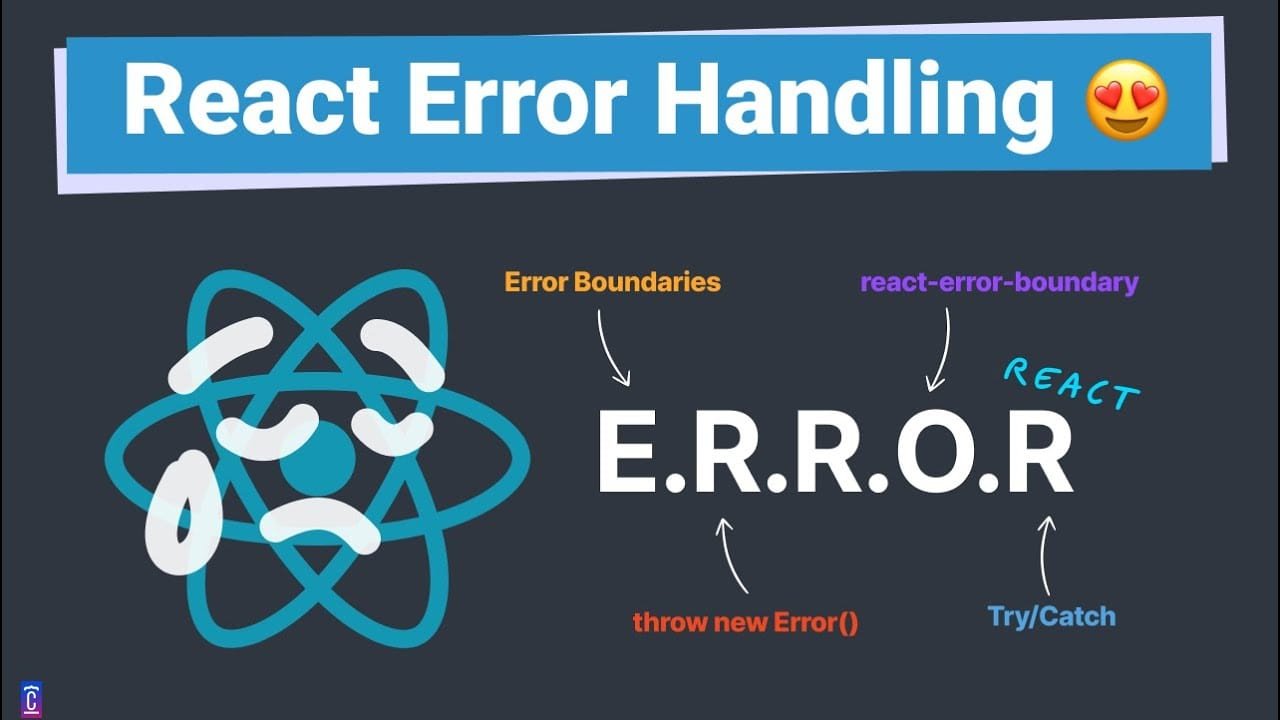In any robust application, handling errors gracefully is crucial to providing a good user experience. React offers a powerful feature called Error Boundaries to catch and manage errors in your component tree. Let’s dive into what Error Boundaries are, why they’re important, and how you can use them effectively in your React applications.
What are Error Boundaries?
Error Boundaries are special React components that catch JavaScript errors anywhere in their child component tree, log those errors, and display a fallback UI instead of crashing the whole app. They do not catch errors for:
- Event handlers
- Asynchronous code (e.g., setTimeout or requestAnimationFrame callbacks)
- Server-side rendering
- Errors thrown in the error boundary itself (rather than its children)
Why Use Error Boundaries?
- Improved User Experience: By catching errors and displaying a fallback UI, you prevent the entire app from crashing and provide a more resilient user experience.
- Easier Debugging: Error Boundaries help in identifying and isolating problematic components, making debugging easier.
- Centralized Error Handling: Instead of scattering error handling logic throughout your components, Error Boundaries provide a centralized way to manage errors.
How to Create an Error Boundary
Creating an Error Boundary involves defining a class component that implements either or both of the lifecycle methods: componentDidCatch and getDerivedStateFromError.
- componentDidCatch: This method is used to log error information.
- getDerivedStateFromError: This method is used to render a fallback UI in case of an error.
Step-by-Step Guide to Implementing Error Boundaries
- Define an Error Boundary Component:
Create a class component that implementscomponentDidCatchandgetDerivedStateFromError.
import React, { Component } from 'react';
class ErrorBoundary extends Component {
constructor(props) {
super(props);
this.state = { hasError: false };
}
static getDerivedStateFromError(error) {
// Update state so the next render shows the fallback UI
return { hasError: true };
}
componentDidCatch(error, info) {
// You can also log the error to an error reporting service
console.error("ErrorBoundary caught an error", error, info);
}
render() {
if (this.state.hasError) {
// You can render any custom fallback UI
return <h1>Something went wrong.</h1>;
}
return this.props.children;
}
}
export default ErrorBoundary;- Wrap Components with the Error Boundary:
Use the Error Boundary to wrap any component that might throw an error.
import React from 'react';
import ErrorBoundary from './ErrorBoundary';
import MyComponent from './MyComponent';
function App() {
return (
<ErrorBoundary>
<MyComponent />
</ErrorBoundary>
);
}
export default App;- Test the Error Boundary:
Ensure that the Error Boundary is working correctly by simulating an error in a child component.
Best Practices for Using Error Boundaries
- Granularity: Use Error Boundaries at strategic points in your app. For example, wrap large sections like the main content area, individual routes, or key components that are more prone to errors.
- Fallback UI: Provide meaningful fallback UIs. Instead of just displaying an error message, you might want to provide options for the user to reload the page, go back, or contact support.
- Logging: Log errors to an error reporting service for further analysis. This helps in understanding the errors better and provides insights for fixing them.
- Avoid Overuse: While it’s important to handle errors gracefully, overusing Error Boundaries can make debugging harder. Only use them where it’s necessary to catch potential errors.
Limitations of Error Boundaries
- Not for Event Handlers: Error Boundaries do not catch errors in event handlers. For those, you need to handle errors within the event handler itself.
class MyComponent extends React.Component {
handleClick = () => {
try {
// Code that may throw an error
} catch (error) {
// Handle the error
}
};
render() {
return <button onClick={this.handleClick}>Click Me</button>;
}
}- Asynchronous Code: Errors thrown in asynchronous code (e.g., within a
setTimeout) will not be caught by Error Boundaries. You’ll need to handle such errors within the asynchronous function. - Server-Side Rendering: Error Boundaries do not catch errors during server-side rendering. For those cases, you should handle errors on the server.
Conclusion
Error Boundaries are a powerful feature in React that help you build resilient applications by catching and handling errors gracefully. By implementing Error Boundaries, you can enhance the user experience, simplify debugging, and centralize your error handling logic.
